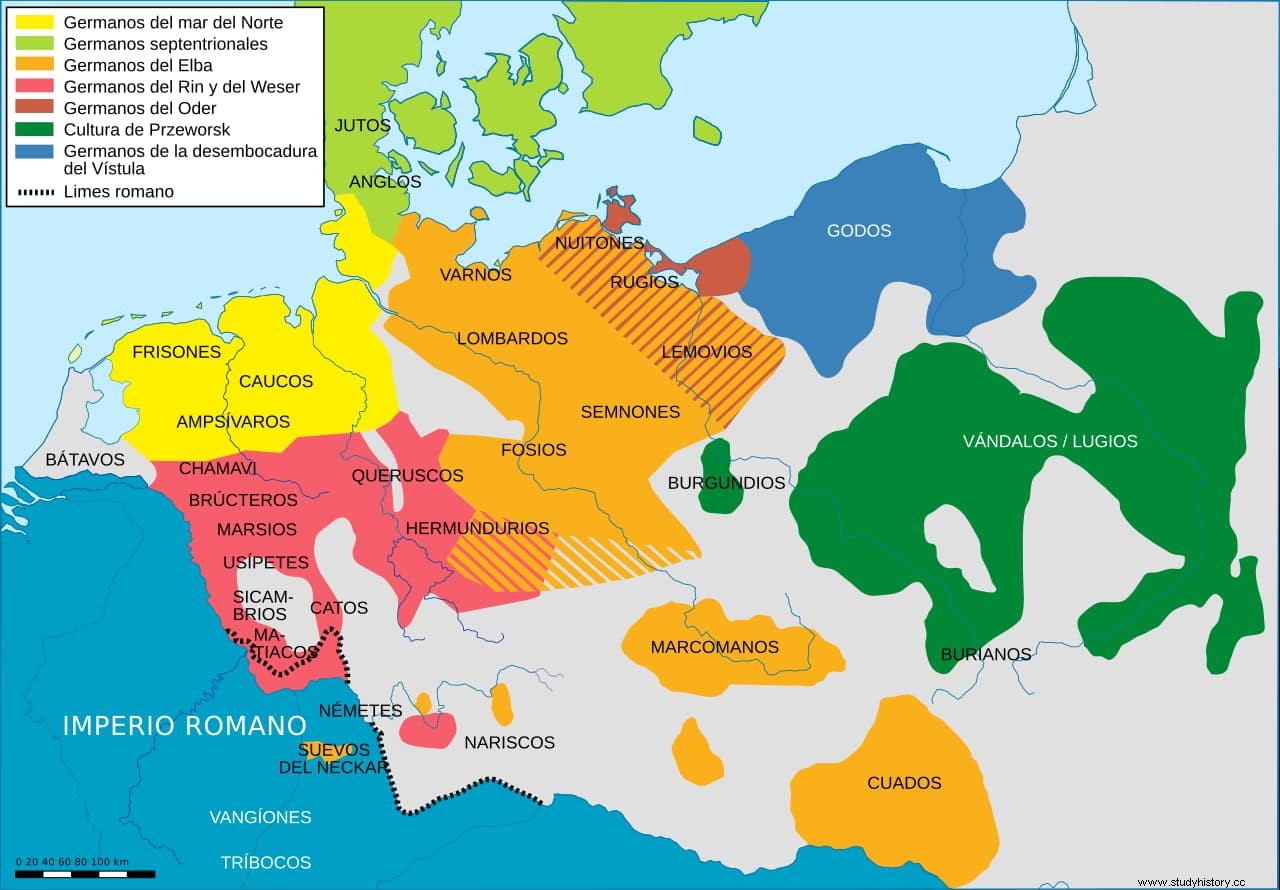According to an anonymous work written in 727 AD. entitled Liber Historiae Francorum (Book of the History of the Franks), after the fall of Troy a large group of 12,000 Trojans, led by Priam and Antenor, fled to the Tanais (Don) river and settled in Pannonia by the Sea of Azov. There they founded a city which they called Sicambria.
If this story by itself is not only amazing but quite incredible, the fact that there is no archaeological evidence of this fact, nor any documentary sources among the Sicambri themselves, was not an impediment for the legend to continue its path throughout. throughout the Middle Ages, resulting in one of the most interesting puzzles of all Antiquity.
Julius Caesar met the Sicambri in 55 B.C. during his conquest of Gaul. They were based on the eastern bank of the Rhine, and were one of those tribes that were in constant conflict with the Ubii, Roman allies. Caesar qualifies them as Germanic, but in reality it is not known if they were a Germanic or Celtic people. It is also not known what language they spoke, although many of their names end in Celtic suffixes such as -rix (Baetorix, etc).

Suetonius states that in the time of Augustus the Sicambri, along with the Ubios, were forced to move to the western bank of the river. Strabo says that they lived on both sides, near its mouth, in swampy forests.
It is known that in September of the year 9 A.D. the Sicambri under the command of Deudorix (son of Baetorix) fought alongside Arminius in the Battle of the Teutoburg Forest which annihilated the three legions of Publius Quintilius Varus.
And two years later, in 11 A.D. The event that started the legend happened. The Sicambri formed a confederation with other peoples from their environment, in which they were the leading nucleus, which called itself confederation of the Franks .
Why did they change their name to Francos ? The Merovingian kings, who claimed descent from the Sicambri and by extension the Trojans (curiously the same as the Romans and other Gallic tribes such as the Aedui), believed that the name change was related to a tribal chief named Franko , which would be the one that unified the confederation.

Not only that, Clovis I was the first King of the Franks which unified all of France, except Brittany and Septimania, and established the capital at Paris. On December 25, 497 AD. (or perhaps 498 AD), Clovis along with 3,000 of his warriors converted to Christianity and were baptized by Saint Remigius in the city of Reims.
According to Gregory of Tours, Gallo-Roman historian and bishop of the 6th century AD. who wrote a Historia Francorum (History of the Franks) which is the main direct source for the study of Merovingian history, at the moment of baptizing Clovis, Saint Remigius said to him:now you must lower your head, proud sicambrio. Honor what you have burned. Burn what you have honored .
So, was the Frank Clovis a Sicambrian? That was the opinion of the Merovingians, and some later scholars. That the Franks came out like Clovis they had been part of the Sicambri, they emigrated from the eastern bank of the Rhine where Caesar had found them and ended up merging with other peoples to give rise to the Frank people. ancestor of the Merovingians and Carolingians.
